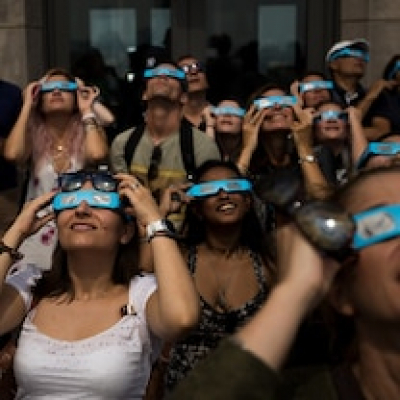Kutluğ Ataman is a renowned Turkish artist and filmmaker celebrated for his innovative approach to storytelling and his profound exploration of identity, culture, and societal norms. Born on August 24, 1961, in Istanbul, Turkey, Ataman's creative journey has spanned multiple mediums, from visual art to cinema, earning him international acclaim and recognition.
Kutluğ Ataman
Early Life and Education:
Growing up in Istanbul, Ataman exhibited a keen interest in the arts from a young age. He pursued his passion for creativity by studying film and art at prestigious institutions such as the University of California, Los Angeles (UCLA), and the University of California, Berkeley. These formative years laid the groundwork for Ataman's future endeavors and provided him with a diverse set of skills that would shape his artistic vision.
Career and Achievements:
Ataman's career as an artist and filmmaker has been characterized by a bold and unapologetic exploration of complex themes, often challenging societal norms and conventions. His groundbreaking works have earned him numerous awards and accolades, including the prestigious Carnegie Prize at the Carnegie International in 2005.
One of Ataman's most notable works is his series of video installations titled "Küba," which explores the lives of residents in a small neighborhood in Istanbul. Through intimate interviews and candid storytelling, Ataman provides a nuanced portrayal of the individuals who inhabit this vibrant community, shedding light on their hopes, dreams, and struggles.
In addition to his visual art installations, Ataman has also made a significant impact in the world of cinema. His feature films, including "Lola + Bilidikid" and "The Lamb," have been screened at major film festivals around the world, garnering critical acclaim for their bold storytelling and rich character development.
Legacy and Influence:
Kutluğ Ataman's artistic legacy extends far beyond the confines of his native Turkey, influencing a new generation of artists and filmmakers around the globe. His fearless exploration of identity, sexuality, and cultural heritage has resonated with audiences from diverse backgrounds, sparking meaningful conversations and challenging preconceived notions.
As a pioneering figure in contemporary art and cinema, Ataman continues to push the boundaries of storytelling, blurring the lines between reality and fiction to create immersive experiences that captivate and inspire. His unwavering commitment to artistic integrity and social commentary serves as a beacon of inspiration for artists and audiences alike, reaffirming the transformative power of art to provoke thought, evoke emotion, and effect change.
Personal Life:
While much of Kutluğ Ataman's life is dedicated to his artistic pursuits, he also values his privacy and personal relationships. He maintains a close connection to his roots in Istanbul, drawing inspiration from the city's vibrant culture and rich history.
In conclusion, Kutluğ Ataman stands as a towering figure in the world of contemporary art and cinema, whose innovative works continue to captivate and challenge audiences worldwide. Through his fearless exploration of complex themes and his unwavering commitment to artistic integrity, Ataman has left an indelible mark on the cultural landscape, shaping the discourse surrounding identity, representation, and the human experience. As his legacy continues to evolve, Ataman remains a trailblazing force in the arts, reminding us of the profound impact that creativity and storytelling can have on our understanding of ourselves and the world around us.
Kutluğ Ataman is a prominent figure in contemporary Turkish art and cinema. He is renowned for his multidisciplinary approach, which encompasses filmmaking, video installations, and contemporary art. Ataman's work often delves into themes of identity, memory, and cultural narratives, reflecting the complexities of Turkish society and its intersections with broader global issues.
One of his notable contributions is his innovative use of storytelling techniques, often incorporating nonlinear narratives and intimate character studies. This approach allows him to explore the intricacies of human experience and challenge conventional storytelling norms.
Ataman's work has received critical acclaim internationally, with exhibitions and screenings at prestigious venues such as the Venice Biennale, Documenta, and the Museum of Modern Art in New York. His films have also garnered attention at major film festivals, further solidifying his reputation as a leading voice in contemporary cinema.
Overall, Kutluğ Ataman emerges as a visionary artist and filmmaker whose work transcends boundaries, inviting audiences to engage with complex narratives and themes that resonate on both personal and societal levels.
Kutluğ Ataman has been referenced in various books, films, series, and websites, particularly those focusing on contemporary art, cinema, and Turkish culture. Some notable mentions include:
• Books:
• "Contemporary Art Turkey" by Hasan Bülent Kahraman
• "Turkish Cinema: Identity, Distance and Belonging" by Gönül Dönmez-Colin
• "Istanbul: The Collected Traveler: An Inspired Companion Guide" by Barrie Kerper
• Films:
• "Journey to the Sun" (1999) directed by Yesim Ustaoglu, where Ataman's work and influence on Turkish cinema are sometimes discussed.
• "Crossing the Bridge: The Sound of Istanbul" (2005) directed by Fatih Akin, which explores the contemporary music scene in Istanbul, a milieu that Ataman is closely associated with.
• Series:
• Ataman's interviews and works may have been featured in documentary series focusing on art, culture, and filmmaking, although specific mentions would depend on the content of individual episodes.
• Websites:
• Websites such as IMDb, Artforum, and Artnet often feature articles, reviews, and interviews related to Kutluğ Ataman's work, providing insights into his artistic practice and contributions to contemporary culture.
These are just a few examples, and Ataman's presence may extend to a wider range of publications and media platforms that engage with his diverse body of work and its impact on the cultural landscape.










